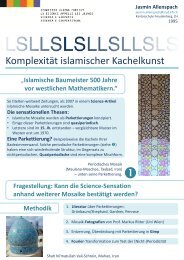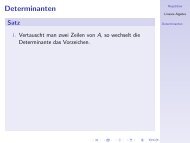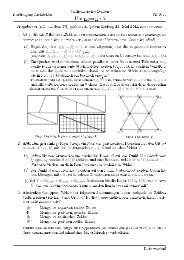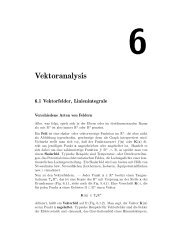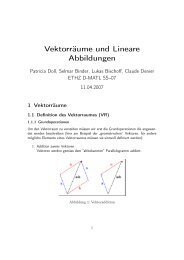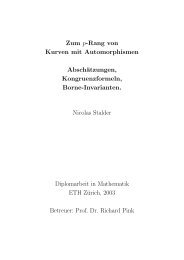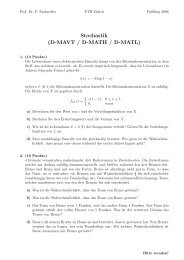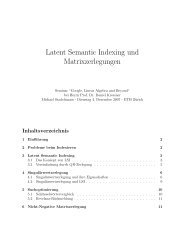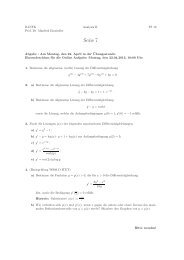Modular elliptic curves and Fermat's Last Theorem
Modular elliptic curves and Fermat's Last Theorem
Modular elliptic curves and Fermat's Last Theorem
Create successful ePaper yourself
Turn your PDF publications into a flip-book with our unique Google optimized e-Paper software.
MODULAR ELLIPTIC CURVES AND FERMAT’S LAST THEOREM 445<br />
Let f be an eigenform associated to the congruence subgroup Γ1(N) of<br />
SL2(Z) of weight k ≥ 2 <strong>and</strong> character χ. Thus if Tn is the Hecke operator<br />
associated to an integer n there is an algebraic integer c(n, f) such that Tnf =<br />
c(n, f)f for each n. We let Kf be the number field generated over Q by the<br />
{c(n, f)} together with the values of χ <strong>and</strong> let Of be its ring of integers.<br />
For any prime λ of Of let Of,λ be the completion of Of at λ. The following<br />
theorem is due to Eichler <strong>and</strong> Shimura (for k = 2) <strong>and</strong> Deligne (for k > 2).<br />
The analogous result when k = 1 is a celebrated theorem of Serre <strong>and</strong> Deligne<br />
but is more naturally stated in terms of complex representations. The image<br />
in that case is finite <strong>and</strong> a converse is known in many cases.<br />
<strong>Theorem</strong> 0.1. For each prime p ∈ Z <strong>and</strong> each prime λ|p of Of there<br />
is a continuous representation<br />
ρf,λ : Gal( ¯ Q/Q) −→ GL2(Of,λ)<br />
which is unramified outside the primes dividing Np <strong>and</strong> such that for all primes<br />
q ∤ Np,<br />
trace ρf,λ(Frob q) = c(q, f), det ρf,λ(Frob q) = χ(q)q k−1 .<br />
We will be concerned with trying to prove results in the opposite direction,<br />
that is to say, with establishing criteria under which a λ-adic representation<br />
arises in this way from a modular form. We have not found any advantage<br />
in assuming that the representation is part of a compatible system of λ-adic<br />
representations except that the proof may be easier for some λ than for others.<br />
Assume<br />
ρ0 : Gal( ¯ Q/Q) −→ GL2( ¯ Fp)<br />
is a continuous representation with values in the algebraic closure of a finite<br />
field of characteristic p <strong>and</strong> that det ρ0 is odd. We say that ρ0 is modular<br />
if ρ0 <strong>and</strong> ρf,λ mod λ are isomorphic over ¯ Fp for some f <strong>and</strong> λ <strong>and</strong> some<br />
embedding of Of /λ in ¯ Fp. Serre has conjectured that every irreducible ρ0 of<br />
odd determinant is modular. Very little is known about this conjecture except<br />
when the image of ρ0 in PGL2( ¯ Fp) is dihedral, A4 or S4. In the dihedral case<br />
it is true <strong>and</strong> due (essentially) to Hecke, <strong>and</strong> in the A4 <strong>and</strong> S4 cases it is again<br />
true <strong>and</strong> due primarily to Langl<strong>and</strong>s, with one important case due to Tunnell<br />
(see <strong>Theorem</strong> 5.1 for a statement). More precisely these theorems actually<br />
associate a form of weight one to the corresponding complex representation<br />
but the versions we need are straightforward deductions from the complex<br />
case. Even in the reducible case not much is known about the problem in<br />
the form we have described it, <strong>and</strong> in that case it should be observed that<br />
one must also choose the lattice carefully as only the semisimplification of<br />
ρf,λ = ρf,λ mod λ is independent of the choice of lattice in K 2 f,λ .


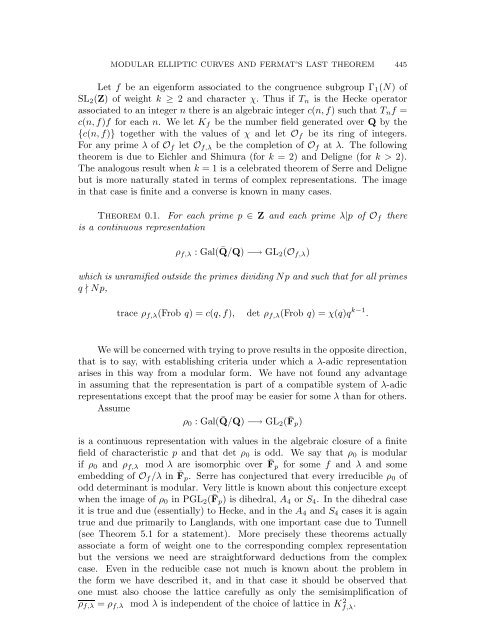
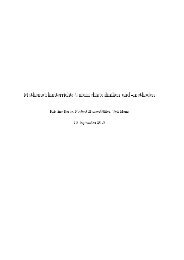
![Mathematik III - Herbst 2013 [5mm] Gesundheitswissenschaften und ...](https://img.yumpu.com/24802081/1/190x143/mathematik-iii-herbst-2013-5mm-gesundheitswissenschaften-und-.jpg?quality=85)
